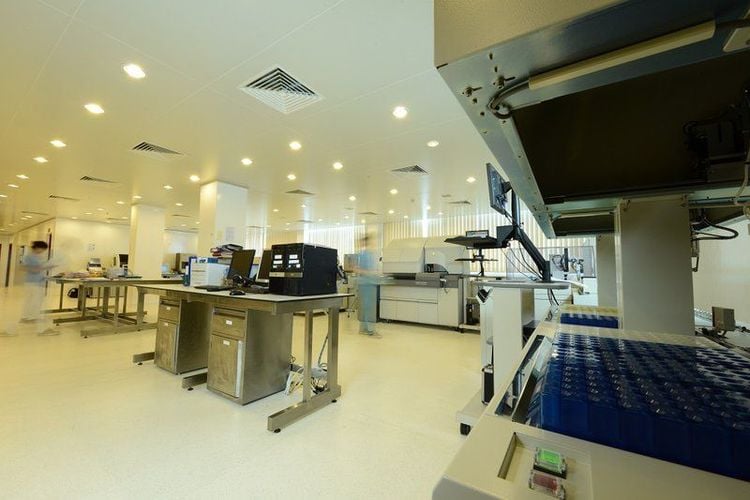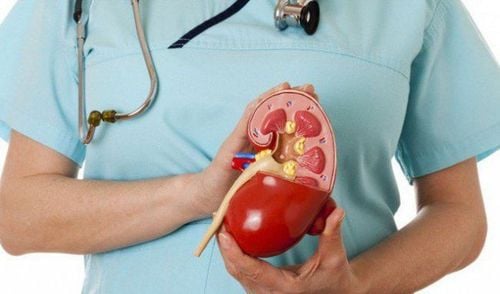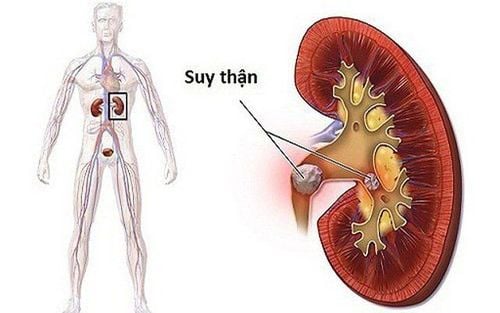This is an automatically translated article.
The article is professionally consulted by Master, Doctor Nguyen Thi Thanh Thuy - Endocrinologist - Dialysis - Kidney Transplant - Department of Examination & Internal Medicine - Vinmec Central Park International General Hospital. The doctor has more than 15 years of experience in the diagnosis and treatment of medical kidney disease, hemodialysis, peritoneal dialysis, pre-transplant screening and post-transplant follow-up.Diabetic nephropathy is a chronic complication that can damage the small blood vessels in the kidneys. People with long-term diabetes with factors such as blood fat, high blood pressure, smoking, inactivity, obesity ... are subjects at risk of diabetic kidney complications.
1. Stages of Diabetic Kidney
For people with diabetes, high blood sugar levels for a long time will produce oxidants that can damage the capillaries in the glomeruli. In particular, excessively high blood sugar will cause the kidneys to work beyond the allowable capacity, this prolonged situation will make the filter holes larger, protein will leak out and affect the function of the kidney. kidney function. If not treated in time, the kidneys will gradually become fibrosis and completely lose their functions. Patients are now forced to use kidney transplantation or dialysis to prolong life.Diabetes is the leading cause of end-stage renal failure, life-sustaining treatment at this time is dialysis, kidney transplantation. In addition, diabetic nephropathy is also often associated with diabetic retinopathy, diabetic neuropathy, and diabetic arterial disease, which increases cardiovascular events and predisposes patients to complications. angina pectoris, myocardial infarction. Currently, the prevalence of diabetic nephropathy is above 40%.
Diabetic nephropathy will progress over time, for patients with type 1 diabetes, there will be no complications at the onset of the disease, only if the patient does not receive proper and adequate treatment, after about 20 years Up to 40% of patients will experience kidney complications. For patients with type 2 diabetes, there is a possibility of albuminuria at the time of diagnosis or later, so if not treated aggressively, about 20% of cases have immediate diabetic nephropathy.
Pathologically, diabetic nephropathy has 5 stages:
Stage 1: The kidneys are enlarged because of high blood sugar and increased blood flow to the kidneys. Stage 2: Beginning of histological changes in the glomerulus and the patient at this time has no obvious clinical symptoms. Stage 3: Diabetic nephropathy progresses more severely, with about 40% of patients progressing to clinically obvious kidney disease. Stage 4: Manifestations of diabetic nephropathy manifest clinically. Patients will have proteinuria, albumin in 24-hour urine > 300mg. The kidney's filtering function declines, and at the same time blood pressure begins to rise. Stage 5: Entering end-stage kidney disease, requiring dialysis or a kidney transplant to maintain life.
2. Characteristics of diabetes through each stage

Đặc điểm bệnh thận đái tháo đường qua từng giai đoạn sẽ khác nhau
Stage 1: Increased function and hypertrophy, increased glomerular filtration rate, increased glomerular filtration rate in type 1 and type 2 diabetes. Albuminuria may increase during this stage. Stage 2: Quiet stage. Thickening of basement membrane, proliferation of glomerular mesenchymal layer. Normal glomerular filtration rate. Normal type 1 diabetic albuminuria. Type 2 diabetic albuminuria ranges from <30mg to 300mg/day. Time in the first 5 years. Stage 3: Latent stage. Albuminuria, LC begin to decrease. Albuminuria 30-300mg/day. Duration from 5 to 15 years. Stage 4: Clinical kidney disease. Proteinuria, LC below normal. Albuminuria>300mg/day, hypertension, duration 15-25 years. Stage 5: Hyperuricemia syndrome, End stage kidney disease. Albuminuria rate 0-10 ml/min, duration from 25-30 years. Diabetic nephropathy, although it often has very faint symptoms at first, but later on, the patient will see obvious clinical symptoms (symptoms of chronic kidney failure) such as:
Itching , pale skin, tired people Swelling of feet and legs Swelling of the face Urinating many times a night Frequent low blood sugar Nausea, loss of appetite Effervescent urine Elevated blood pressure To help diabetics easily detect For disease control, timely treatment and prevention of complications, Vinmec International General Hospital has applied a new test technique L-FABP that allows early diagnosis of kidney damage levels and identification of kidney disorders. acute tubular microcirculation. This is a new biomarker that reflects the serious condition of the tubule before there are signs on the tissue so that doctors can promptly treat it. With this technique, patients only need to collect urine for testing at any time of the day and will give accurate results after 30 minutes. Up to now, Vinmec is proud to be the first address in Vietnam to apply this testing technique according to Japanese technology on a modern automatic AU680 testing machine.

Kỹ thuật xét nghiệm mới L-FABP được Bệnh viện Đa khoa Quốc tế Vinmec áp dụng
Please dial HOTLINE for more information or register for an appointment HERE. Download MyVinmec app to make appointments faster and to manage your bookings easily.













